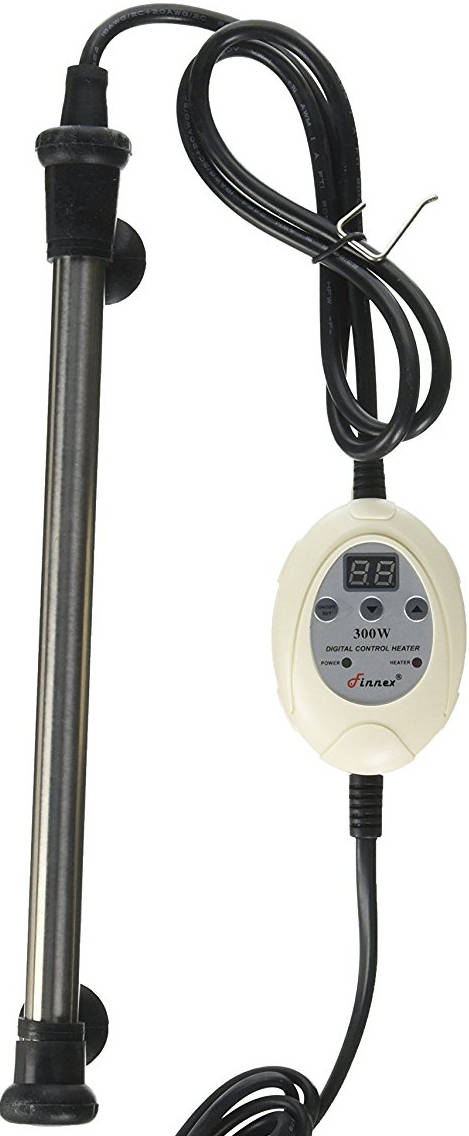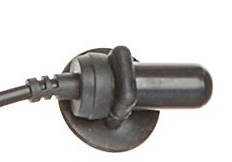If you’ve landed on this page chances are you have heard an aquarium horror story. Most often this is a result of a high quality aquarium heater suddenly breaking after years of service. The heater either never shuts off an proceeds to boil the fish alive or stops heating and freezes everything to death. Either way, owners then walk in the next morning to a tank where nothing remains.
So how can we prevent these atrocities? There are a few methods, each of which with their own draw backs. For those who seek the cheapest solution, getting two lower wattage heaters for one tank can be enough peace of mind. The idea here is that both heaters must break for the aquarium to be boiled or frozen.
While I do recommend this for expensive aquariums stocked with corals and high value fish, dual heating units is not enough to prevent accident. Unless the owner is checking their heat daily it is still possible for fish to be boiled or frozen before anyone notices.
So what is the fail safe solution? As you may have guessed from the headline aquarium heater controllers prevent both high and low temperatures. Some even go so far as alerting owners to any threats the heaters or other components may have caused. Should the aquarium continue to climb past the expected temperature the aquarium heater controller will shut off the heaters power until the tank needs it again.
While heaters do typically come with this function they are not reliable enough for tanks that can easily cost thousands of dollars. Simply put aquarium heater controllers hold a precise temperature regardless of heater health. In fact owners can even use “stuck on” heaters safely with a controller in place. This essentially gives you back every heater that’s ever broken this way. If you know other aquarists Be sure to take their stuck on heaters off their hands to save a nice chunk of money.
Aquarium Heater Controller For Tanks Under 100 Gallons
To put the title more precisely the Finnex Max-300 Digital Aquarium Heater Controller is suitable for all aquarium heating setups 300 watts and under. For tanks needing much higher temperature changes and therefor wattages, see the next controller.
The 300 features the overheating protection we all so desire combined with a built in memory system. This allows you to set your temperature to exactly what you wish. I use mine to give corals the perfect temperature.
Installation
To install this controller you simply place the temperature sensor probe into your tank and keep the controller close enough so that the probe does not get moved when you use the controller. Next you plug your heater into the controllers power receptacle. It really is as simple as pushing the suction cup against the inner glass of the aquarium and swapping sockets.
Make sure to keep the sensor probe away from external heat sources. Allowing the probe to sense heat generated by a nearby radiator or light may cause incorrect readings.
Details
The 300 has three simple buttons. Two buttons raise and lower the temperature while the third button turns the device on and off. While this may sound pointless it actually allows owners to shut off their heaters during water changes without having to fiddle with the wire mess aquariums always create.
Underneath the two temperature buttons are the indicator lights. The green power light shows that the controller itself is receiving power. This light should always be on when you run the controller. To the right of this green light is the red heater indicator light. This one shows when the heater is activated and is heating the aquarium. If you notice this light never shuts off, ensure your heater is able to reach the desire temperature. Remember large temperature changes can demand increased wattage
The socket is triple prong to allow any and all plugs to fit into the controller. I like to take advantage of this and use a splitter. By doing so I can use two separate heaters and create a more even and reliable heat source for my aquariums.
On the frame of the controller is a screw that allows you to attach the controller to any surface you would like. This may be nice for those with a permanent set-up but I personally find my controller in a new place each month. For this I use the included hanger to hook the controller into place.
Special Note:
I have been asked several times if the controller works with inline heaters. The controller does indeed work with any kind of heater, including inline, as the sensor is a probe placed in the water. Once the heat exceeds the temperature desired the heater is shut off.
Finally the warranty on the controller lasts up to 6 months. If your controller makes it this far without breaking then it is safe to assume you got the standard high quality the controller is known for and not a faulty unit.
Summary
For under $30 the controller can save aquariums from the disaster of boiled/frozen tanks. The controller is easy to install and supports all heaters up to 300 watts.
Aquarium Heater Controller For Tanks Over 100 Gallons
For any and all tanks that manage to reach over 100 gallons (This does include additional bodies of water such as sumps, canister filters and pipes) I fully recommend the Finnex Temperature Controller Digital Heater.
Installation
Installing this aquarium heater controller is the same as the previous one. Simply plug in your heater and place the sensor probe into the tank. For the best results put the heater and probe far away from one another so that the probe does not sense the heat of the heater instead of the water. Be sure to adjust the low and high alerts as the factory defaults will allow the water to fluctuate between 67-93 degrees before sounding the alarm.
Directions
- Hold the ON/OFF switch for about two seconds to switch the controller on or off.
- Use the C/F button to choose your preferred temperature reading of Celsius or Fahrenheit.
- Pressing the ON/OFF/SET button will switch the controller into temperature setting mode. While the numbers are blinking use the +/- buttons to set your desired temperature. Press the ON/OFF/SET button to finalize your settings.
- To set the alert/alarm settings press the ALERT-HI/LO button until the temperature is blinking. Use the =/- buttons to set the alert to your desired settings and allow the controller to automatically return to the stand-by state. This will store your setting into the systems memory and will resume after power failures.
Details
This controller can handle all the way up to 800 watts, allowing for one controller to monitor about 270 gallons of water. Once you start breaking past that point you’re pretty much going to have to get multiple controllers or contact an industrial seller.
What sets this controller above the rest is it’s built in alarm system. Once the heat falls or rises past your chosen settings the Finnex will sound, alerting the owner to problems beyond the heaters capabilities. This may not sound that big of a deal but the alarm really does double or even triple the value of the controller. If you are asleep or in another room you won’t notice other controllers small light. A noisy alarm will be the savior to your valuable tank.
In addition to the alarm system the Finnex makes a audible click when the heater shuts off or turns on. This may seem pointless but actually lets you know when there is a lot of temperature change on your aquarium. An example was when my brother turned a fan to face his chair and then turned it away further. The fan ended up directed towards the tank, causing the temperature to fall much faster than expected. Without the constant clicking the heater would have been turning on all day and costing me both money and degrading the heater.
Some of you may be wondering why the controller even has an alarm for the high point. If the controller is powered the heat shouldn’t be able to rise above the set temperature right? Dead wrong. Pumps, Light fixtures, ambient temperature and even filtration can add heat to your tank. When the heater shuts off at only 76 it’s not hard to image a tank continuing to rise above that mark. In fact for the first tank I started in the summer I did not even have a heater in place. The wall would heat my tank to at least 78 degrees with the indoor temperature being set to 75. Adding on large pumps would have easily seen my tank fried! Thanks to the high temperature alarm the Finnex offers your tank will be protected from this fate.
More recently Finnex has added their memory feature onto this model of controller. This means even after a power outage your tank will be kept at the perfect setting, alarms and all still in place.
Once again the warranty on this controller is a solid 6 months. At this price point You will expect the controller to last quite a bit longer than others. Thankfully it does. While my controller still has not broken after six years, the shortest life time I could find was 2.5 years. It’s safe to say this controller will far outlast the competition.
My one complaint with this controller is the probe’s wire length. For being suitable for a 250 gallon the wire should be a little longer. Unfortunately it measures in at about three feet. While the power cord is 6 feet, allowing for a combined 9 feet of cords, the 3 foot probe cord keeps my controller stuck to the side of my tank. It looks really nice and high tech, but I prefer to see the contents of the tank and not the equipment.
By choosing to install an aquarium heater controller you will ensure your tank never meets an untimely end at the hands of faulty heaters or over-heating aquarium pumps. We recommend using only the best aquarium heater you can find for perfect results. While cheap heaters that break and stay on are no problem, heaters that shut off and cannot heat are still useless. Our tanks mean a lot and I certainly sleep a lot better at night knowing my well aged tanks and their expensive livestock are safe and sound thanks to my aquarium heater controller.



Can you recommend a good digital thermometer? I currently just set the heater at the desired temp and hope that it’s correct.
Hi J.D,
Recently I visited my father in law and noticed his heater was off by 6 degrees, as it was set to 76 but raised the waters temperature to 82. I checked this with my infrared thermometer after I noticed his Firefish acting strange.
I ended up getting him this HDE Digital thermometer. It’s really easy to use and gets the same exact reading as my laser thermometer, so I’m happy with it.